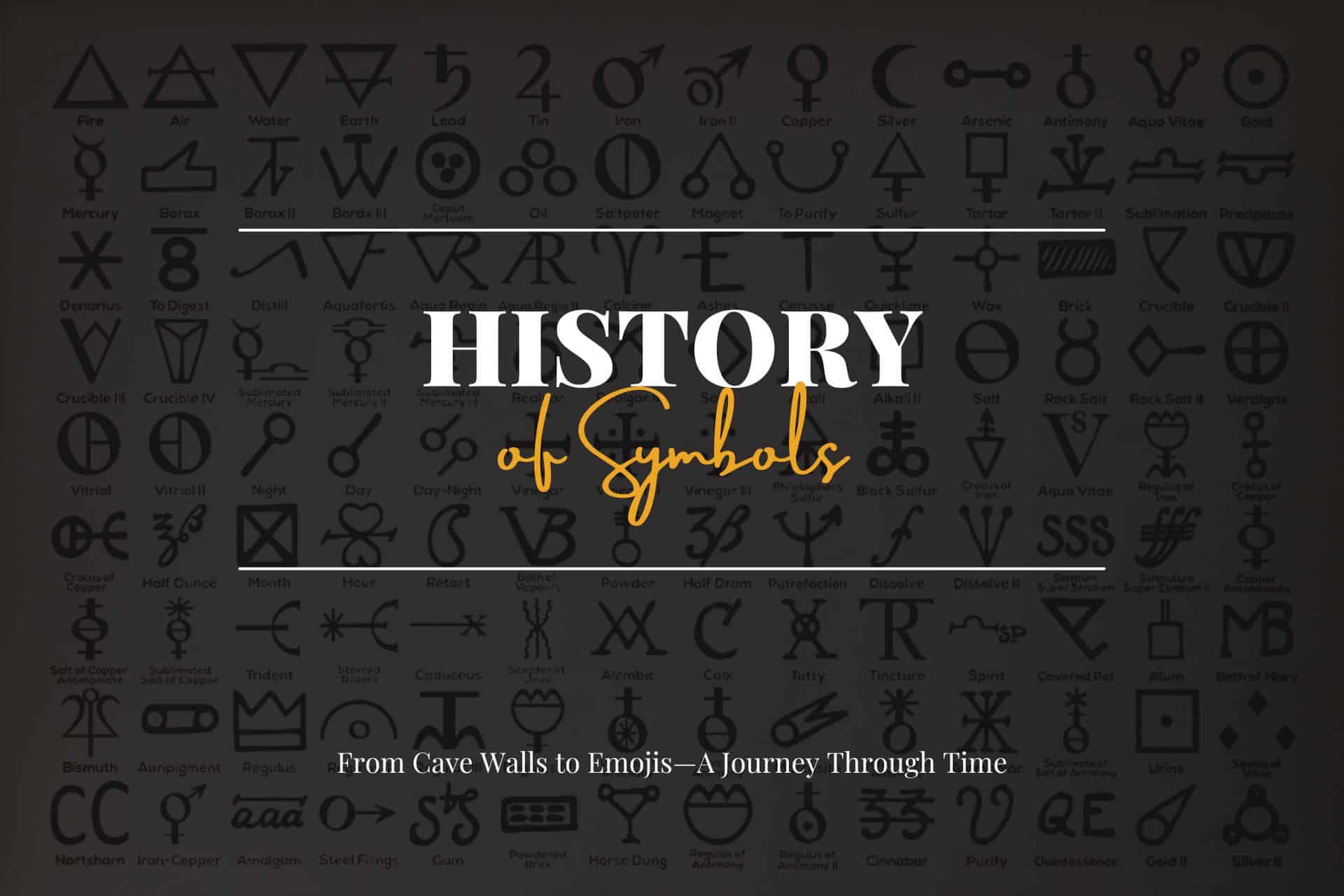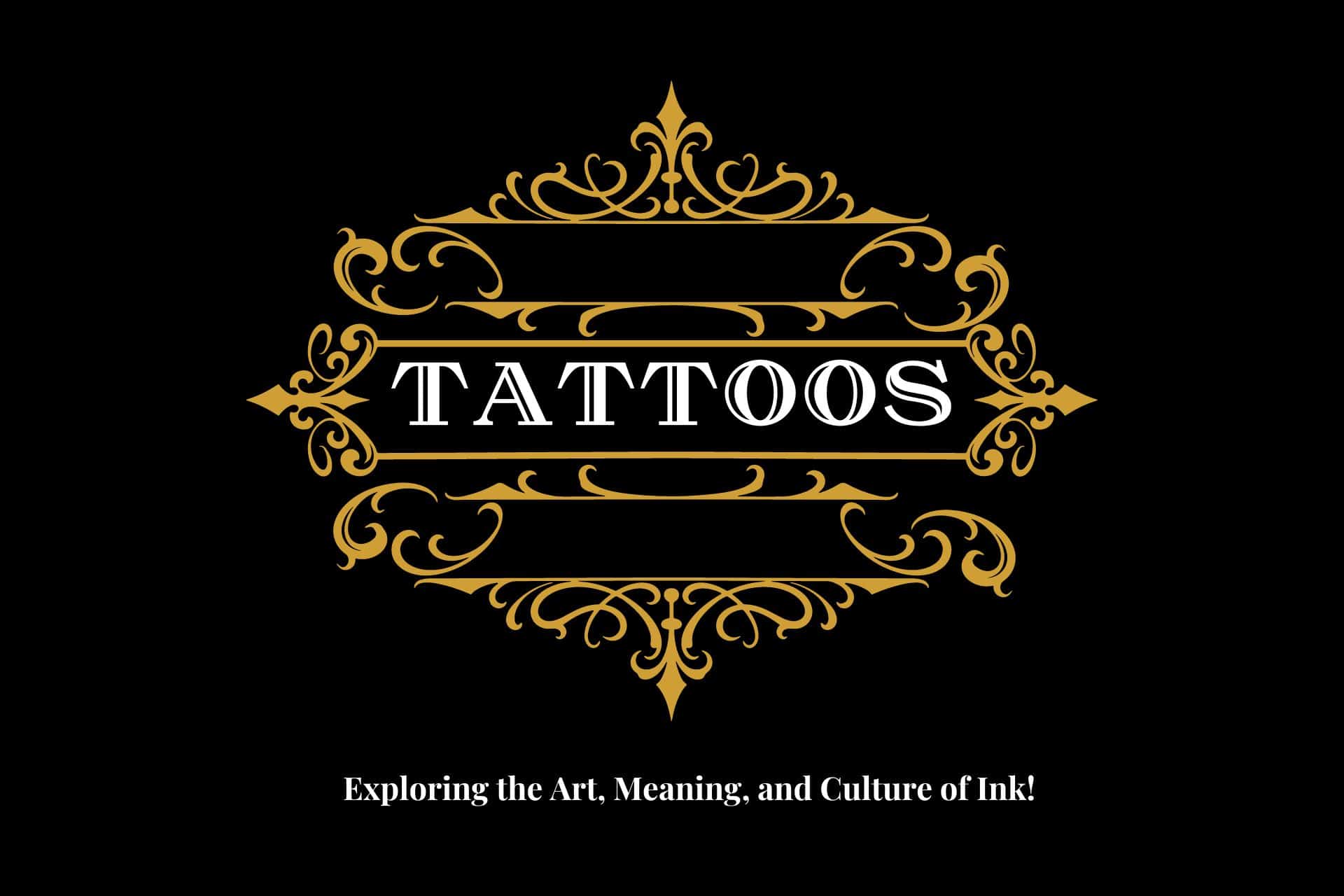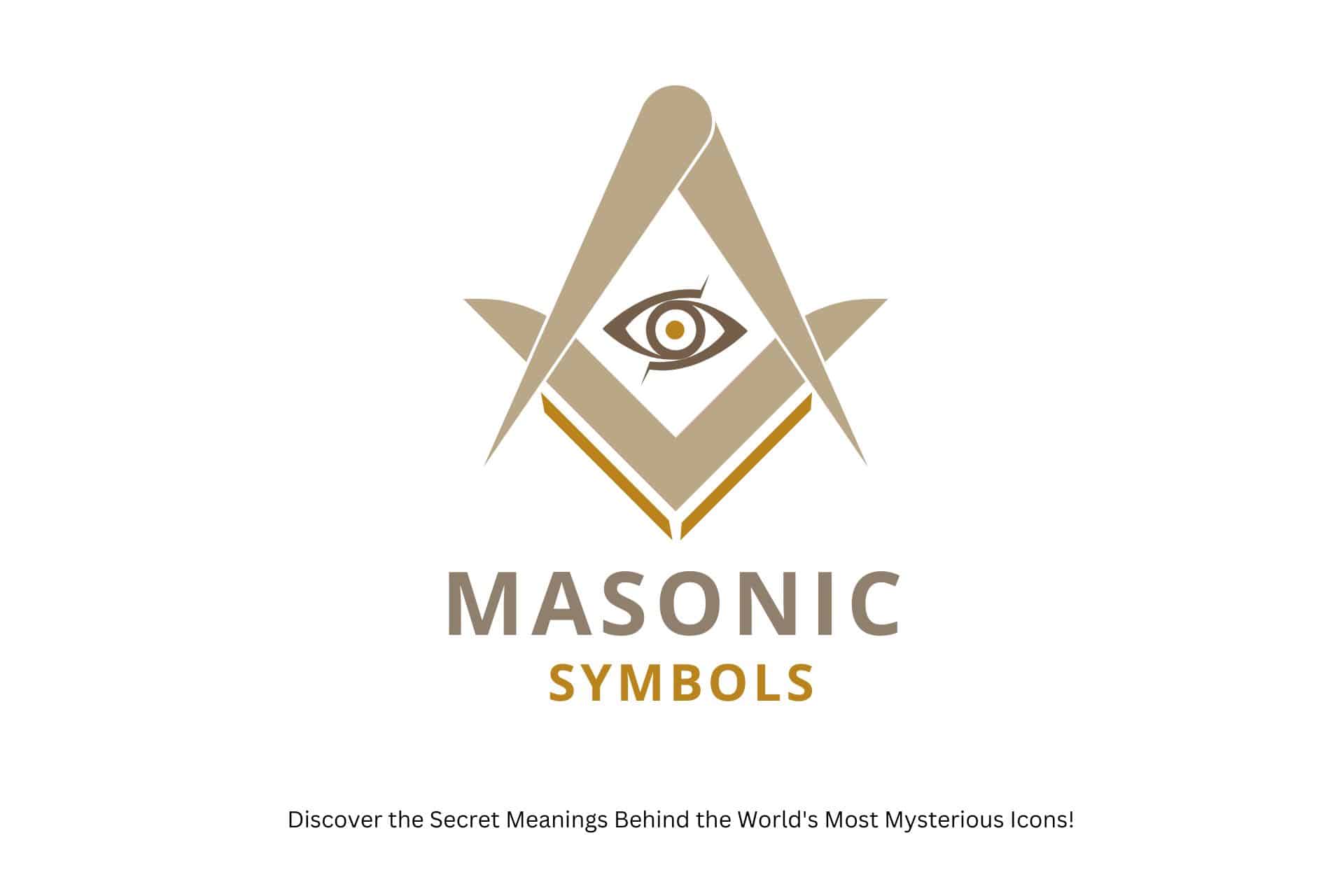Deciphering Ideograms: From Egyptian Hieroglyphs to Your Latest Text Message!
Are you curious about the mysterious symbols we encounter everywhere, from ancient art to modern emojis?
Have you ever wondered about the power and meaning behind ideograms?
This article will guide you through the fascinating world of ideograms, shedding light on their history, significance, and continuing influence on global communication.
You’ll learn how these symbols transcend language barriers, enriching our understanding of human expression. Continue reading to unlock the secrets of ideograms and discover their enduring impact on our daily lives.
Let’s get started!
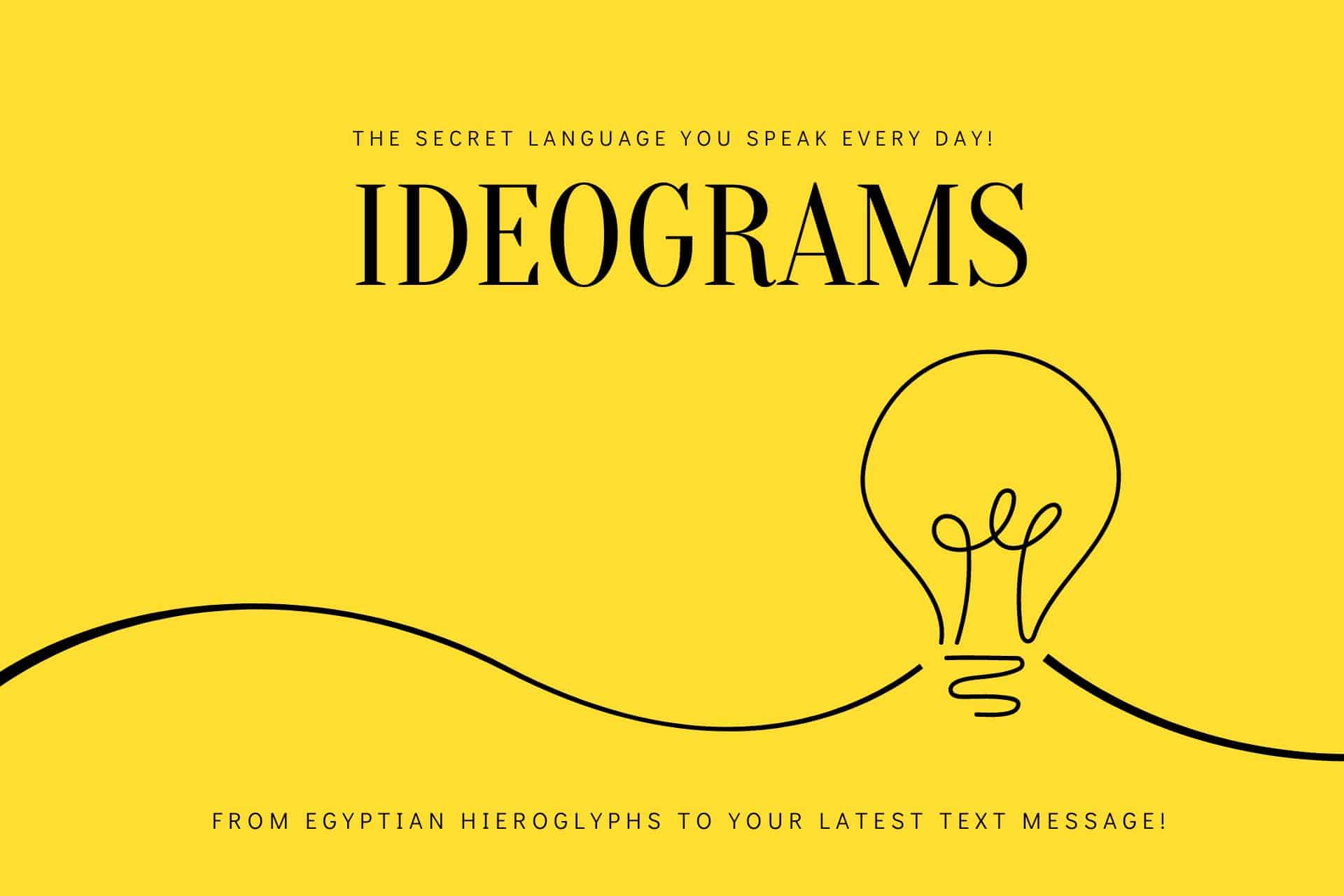
Here’s What You Will Find

Key Takeaways
Ideograms
Ideograms Transcend Language: Ideograms are powerful symbols that represent ideas or concepts directly, without the need for specific words or sounds. This unique feature allows them to be universally recognized across different cultures and languages, making them an essential tool for global communication.
Everyday Use and Importance: From traffic signs and public symbols to corporate logos, ideograms permeate our daily lives, offering a visual shorthand for complex information. They ensure safety, facilitate navigation, and convey brand identities efficiently, showcasing the versatility of visual communication.
Enhancing Nonverbal Communication: Ideograms play a crucial role in nonverbal communication, enabling individuals to express emotions, intentions, and ideas without words. They are particularly valuable in digital communication, where emojis add emotional depth and accessibility, aiding those with speech or hearing impairments.
Cultural and Historical Significance: Ideograms are deeply rooted in human history and culture. Beyond their practical uses, they reflect the evolution of communication and the cognitive ability to conceptualize abstract ideas visually. They remind us of the shared human capacity for creativity and understanding beyond the spoken word.
What is an Ideogram?
An ideogram is a symbol that represents an idea or concept independently of any specific language and without the necessity of being pronounced in a certain way.
Unlike phonetic symbols, which correspond to sounds or spoken words, ideograms convey their meaning through visual form. This makes them understandable to those familiar with the symbol across languages and cultures. This unique characteristic allows ideograms to transcend linguistic boundaries, facilitating universal communication.
Ideograms are part of a broader category of symbols used in written communication. These include logograms, where each symbol represents a word or morpheme (the smallest meaningful unit in a language), and pictograms, which depict objects or actions in a stylized form.
However, what sets ideograms apart is their ability to encapsulate complex ideas, emotions, or actions without direct reference to a specific linguistic construct. They are a distilled expression of human thought and creativity, capturing the essence of an idea in a single, often elegant, graphic representation.
Various cultures have developed and utilized ideograms throughout history, ranging from religious and ceremonial symbols to mathematical and scientific notation. Ancient civilizations, such as the Egyptians with their hieroglyphs and the Chinese with their characters, developed sophisticated systems of writing that heavily relied on ideographic symbols.
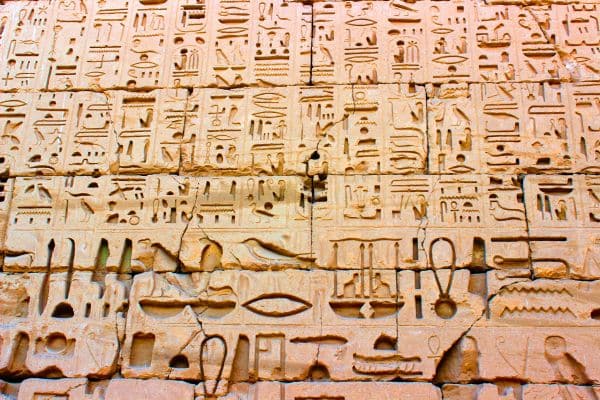
In modern times, ideograms continue to play a vital role in communication, especially with the advent of the internet and digital media, where symbols like emojis have become an integral part of online discourse, allowing people to express emotions and concepts succinctly and vividly in a way that words alone might not capture.
The human brain’s processing of ideograms highlights the cognitive ability to recognize and interpret complex concepts from visual cues, suggesting an intensely visual and intuitive form of thinking and comprehension.
This aspect of ideograms makes them a subject of interest not only in linguistic and cultural studies but also in psychology and neuroscience as researchers explore how visual symbols and imagery influence cognition, memory, and communication.
In essence, ideograms serve as a bridge between the abstract and the concrete, offering a medium through which complex ideas can be communicated visually, transcending spoken and written language limitations. Their widespread use and enduring presence throughout human history underscore their fundamental role in the tapestry of human communication and cultural expression.
Did You Know?
An ideogram is a graphic symbol that represents an idea or concept independent of any particular language and specific words.
This distinction is crucial, separating ideograms from pictograms—their more literal cousins—and other symbolic forms that might represent sounds or specific objects. Ideograms embody abstract concepts; for example, a heart shape conveying love, or mathematical symbols like “=” denoting equality, transcend linguistic constraints, allowing for universal communication.
Exploring the World of Ideograms
In the tapestry of human communication, ideograms function as compact carriers of culture, science, and emotion. These symbols distill complex ideas into forms that leap over language barriers, making them potent tools for global understanding.
Let’s examine some key examples and explore the categories where ideograms shine the brightest.
- Mathematical and Logical Symbols: These symbols represent the foundational concepts of mathematics and logic, enabling us to perform and communicate complex operations and relationships. Examples include the plus sign (
+) for addition, the minus sign (-) for subtraction, the equals sign (=) for equivalence, the not equal sign (≠) for inequality, and the lemniscate (∞) for infinity. - Scientific Symbols: Scientific ideograms encapsulate vast concepts within simple emblems. The degree Celsius (
℃) and Fahrenheit (℉) efficiently convey temperature units, while the atomic symbol (⚛) has become synonymous with the field of science itself, often representing atoms or molecules. - Cultural Symbols: Various cultures’ values, beliefs, and traditions are embedded within these symbols. The heart (
❤️) has universally come to represent love and affection. The Yin-Yang (☯) symbolizes the balance of opposites in Eastern philosophy, and the Latin cross (✝) is recognized worldwide as a symbol of Christianity. - Religious Ideograms: Ideograms in religious contexts communicate spiritual beliefs and practices across different faiths. The Star of David (
✡) represents Judaism, the crescent moon, and the star (☪) are associated with Islam and the Dharma wheel (☸) is symbolic of Buddhist philosophy and teaching. - Political Symbols: Conveying political stances, affiliations, and ideologies, these ideograms are powerful agents of identity and persuasion. The peace sign (
☮), the anarchy symbol (Ⓐ), and various political party emblems are utilized to express and unite collective political thoughts and actions. - Currency Symbols: The representation of economic concepts through ideograms helps in the instant recognition of different forms of currency, facilitating global trade and finance. The dollar sign (
$), euro (€), pound sterling (£), and yen (¥) are prime examples. - Emoji: The modern ideograms of the digital age, emojis bring a visual and emotional layer to our digital communications. They range from facial expressions, like the smiley face (
😊), to symbols representing activities, objects, and concepts, like a musical note (🎵) or a thumbs up (👍). - Traffic and Road Sign Symbols: These ideograms provide critical information to drivers and pedestrians, contributing to road safety and order. The stop sign icon, the pedestrian crossing symbol, and directional arrows are among the symbols that function universally, regardless of the local language.
- Astronomical and Astrological Symbols: These symbols provide a shorthand for celestial bodies and astrological signs. The sun symbol (
☉) represents the star at the center of our solar system, while the signs of the zodiac, like Aries (♈) and Libra (♎) convey astrological concepts. - Weather Symbols: Meteorological ideograms visually communicate weather conditions, forecasts, and phenomena, such as the sun for clear skies (
☀️), clouds for overcast conditions (☁️), raindrops for rain (🌧), and a snowflake for snow (❄️). - Corporate Logos: Logos are ideograms that embody the identity and essence of a brand. The apple with a bite taken out (
) is synonymous with Apple Inc., while the swoosh (✔️) instantly evokes Nike. - Ecological and Environmental Symbols: In the service of the planet, these symbols promote awareness and action for environmental issues. The recycling symbol (
♻️), the green dot, and the biohazard sign (☣️) remind us of the importance of sustainability and caution. - Historical Ideograms: These are the enduring symbols from past civilizations, capturing the essence of their culture and knowledge. Egyptian hieroglyphs, like the Ankh (
☥), symbolizing life, and cuneiform script, among the earliest forms of writing, are historical ideograms that provide valuable insights into the ancient world. - Computer and Technology Symbols: These ideograms have become integral to our daily technological interaction as we navigate the digital era. The power symbol (
⏻), representing the act of turning on or off, and the USB icon (🔌), signifying data connection and transfer as universal symbols in the technological landscape.
Each ideogram carries a story—a visual narrative that speaks to our collective understanding of our world.
From the scientific to the spiritual, the economic to the emotional, these symbols form an unspoken but clearly understood dialogue that resonates across humanity’s many tongues.
Examples of Ideograms
Throughout history, various cultures have employed ideograms to convey complex ideas. Egyptian hieroglyphs, a famous ancient script, combined logographic and ideographic symbols to record their civilization’s achievements and lore.

Chinese characters, another eminent example, often combine elements to suggest a word’s meaning. Many characters are rooted in ancient pictorial representations of objects and ideas. In mathematics and science, symbols like π (pi) and Δ (delta) communicate specific concepts and operations fundamental to the disciplines, transcending language barriers.
Identifying Ideograms in Everyday Contexts
Ideograms are woven into the fabric of our daily lives, often so seamlessly that we might not recognize them as such. They are the silent communicators guiding us through complex environments, from bustling city streets to the digital world of the internet. Traffic signs, public symbols, and corporate logos are prime examples of ideograms in action, serving critical functions in public communication, safety, and branding.
- Traffic Signs: Traffic signs are perhaps the most universally recognized ideograms designed to convey crucial information quickly and effectively to drivers and pedestrians alike. With its distinctive octagonal shape and bold lettering, the stop sign is universally understood to mean “stop,” regardless of the local language.
Similarly, symbols for “no entry,” “pedestrian crossing,” and “speed limit” are designed for instant recognition, ensuring safety and efficiency on the roads.
- Public Symbols: Public symbols, including those for restrooms, airports, and information, rely on ideographic representation to communicate across language barriers. These symbols guide locals and tourists, helping them navigate public spaces effortlessly. For example, the international symbols for men’s and women’s restrooms are recognized worldwide, demonstrating how ideograms can facilitate basic societal functions through visual language.
- Logos: Corporate logos are a form of ideogram that encapsulates a brand’s identity and values within a simple, memorable design. The Apple logo, for example, immediately recalls technology and innovation, while the Nike swoosh symbolizes movement and athleticism.
Logos function as visual shorthand for the brand they represent, conveying complex ideas and emotions associated with the brand to the consumer at a glance.
These everyday applications of ideograms underscore their versatility and efficiency as communication tools. They demonstrate the power of visual symbols to convey complex information quickly and effectively, transcending language and cultural barriers.
The Importance of Ideograms in Non-verbal Communication
In non-verbal communication, ideograms are pivotal in conveying messages and emotions without words. Non-verbal communication encompasses various human interactions, from facial expressions and body language to visual symbols to express ideas, emotions, and intentions.
Ideograms, with their ability to encapsulate complex concepts in a simple visual form, are a key component of this silent language.
- Universal Language: Ideograms contribute to a universal language of symbols that can be understood across cultures and linguistic backgrounds. This universality makes them invaluable tools for global communication, enabling people from diverse backgrounds to share ideas and information without linguistic barriers.
- Emotional Expression: In personal communication, ideograms, such as emojis, have become integral to expressing emotions and nuances that might be difficult to convey through text alone. They add a layer of emotional expression to digital communication, making it more personal and expressive.
- Accessibility: For individuals with speech or hearing impairments, ideograms can provide an accessible means of communication. Sign language, for example, uses ideographic gestures to represent words and concepts, enabling effective communication without sound. Similarly, pictorial symbols used in augmentative and alternative communication (AAC) systems help those with communication challenges to express themselves and interact with others.
The significance of ideograms in non-verbal communication lies in their ability to bridge gaps—between cultures, languages, and abilities—enriching human interaction with a depth and richness that words alone cannot always achieve. By leveraging the power of visual symbols, ideograms enhance our ability to communicate complex ideas and emotions in an increasingly interconnected world.
Characteristics of Ideograms
Ideograms are a fascinating and complex component of human communication, embodying ideas and concepts through visual symbols. Their characteristics distinguish them from other written symbols and highlight their unique role in transcending linguistic boundaries.
Understanding these characteristics provides insight into how ideograms function and why they hold such significance in various aspects of human culture, from ancient scripts to modern digital communication.
Representation of Ideas
The primary characteristic of an ideogram is its ability to represent ideas or concepts directly rather than through language sounds.
For example, an ideogram for “peace” does not spell out the word “peace” but instead uses a visual symbol understood to represent the concept of peace itself. This direct representation allows ideograms to be universally recognized by those who understand the symbol, regardless of their spoken language.
Cultural and Contextual Variability
While ideograms are designed to be universally understandable, their interpretation can vary significantly across different cultures and contexts. What is considered a symbol of good fortune in one culture might not hold the same meaning in another. This variability underscores the importance of cultural context in interpreting ideograms, as their meanings are often rooted in specific historical and social backgrounds.
Visual Simplicity and Abstraction
Ideograms are typically characterized by visual simplicity and abstraction. They distill complex ideas into simple, easily recognizable forms. This simplification allows for the immediate recognition and understanding of the represented concept. Over time, many ideograms have evolved from more literal pictographic representations to highly stylized and abstract forms, making them more versatile and widely applicable.
Use Across Various Media
Another characteristic of ideograms is their adaptability across different media and platforms. From the stone carvings of ancient civilizations to the digital screens of smartphones, ideograms can be used in various materials and technologies. This versatility underscores their enduring relevance and the human capacity for visual communication.
Capacity for Combination
Ideograms can often be combined to convey more complex ideas or narratives. In some writing systems, such as Chinese characters, individual ideograms can be combined to create new symbols with distinct meanings. This characteristic allows for a rich and nuanced expression of ideas, enabling the communication of complex concepts through combining simpler visual elements.
Symbolic and Emotional Resonance
Ideograms can carry significant symbolic and emotional resonance, evoking feelings or ideas beyond their visual representation. For example, a heart symbol can evoke feelings of love, affection, or heartache, depending on the context in which it is used. This emotional resonance adds depth to the ideogram’s meaning, enabling it to communicate more intuitively and viscerally.
How Ideograms Differ from Other Forms of Written Symbols
Ideograms, logographs, pictographs, and alphabets constitute essential elements of human written communication. Each serves unique functions and employs different strategies for representing language. Understanding how ideograms differ from these symbols provides insight into the diversity of human writing systems and the evolution of written language.
Ideograms vs. Logographs
Logographs represent words or morphemes (the language’s most minor meaningful units). Unlike ideograms, which convey an idea or concept, logographs are tied to specific linguistic units.
For example, most Chinese logographic writing system characters represent a single word or morpheme. While some Chinese characters have ideographic elements, the primary distinction lies in logographs’ direct association with spoken language.
Ideograms, on the other hand, are not limited by language and can be understood across different linguistic groups, provided the symbol’s meaning is culturally recognized.
Ideograms vs. Pictographs
Pictographs are symbols that represent objects or actions through a form that visually resembles what they denote. They are more literal and less abstract than ideograms. For instance, a pictograph of a bird attempts to visually mimic the appearance of a bird, making it relatively straightforward to interpret.
Conversely, Ideograms abstract these representations to convey broader concepts or ideas that may not be visually similar to the symbol itself. The transition from pictographs to ideograms in writing systems marks a significant evolution in human communication, from depicting concrete objects to expressing complex ideas.
Ideograms vs. Alphabets
Alphabets consist of letters that represent sounds rather than concepts. The primary purpose of alphabetic writing systems is to phonetically represent the spoken language, allowing for the transcription of an infinite array of words and ideas through a limited set of symbols.
Alphabets differ significantly from ideograms, requiring knowledge of the specific language’s phonetic structure to be understood. In contrast, ideograms can convey meaning directly through visual representation, bypassing the need for phonetic interpretation. This makes ideograms more universally recognizable and limits the range of expressions compared to the flexible combinatory possibilities of alphabetic systems.
Ideograms vs. Syllabaries
Syllabaries are writing systems where each symbol represents a syllable, a unit of sound comprising one or more vowels, with or without one or more consonants. These systems, such as the Japanese kana (hiragana and katakana) or the Cherokee writing system, bridge the gap between the phonetic simplicity of alphabets and the conceptual complexity of logographs. Each symbol in a syllabary corresponds to a specific syllable rather than an individual sound (phoneme) or a complete idea/concept.
The key difference between ideograms and syllabaries lies in the level of linguistic abstraction and representation. Ideograms are symbolic representations of ideas or concepts without any inherent phonetic component. Since the viewer is familiar with the symbolism, they communicate meaning directly through their form and are understood across languages and cultures. This allows ideograms to convey complex concepts or emotions without reliance on a specific spoken language.
In contrast, syllabaries are closer to the phonetic end of the writing system spectrum. While they do not represent individual sounds like alphabets, they are deeply tied to the spoken language, with each symbol representing a building block of speech. Understanding a syllabary requires knowledge of the language’s phonetic structure, as the symbols are essentially shorthand for syllables used in constructing words.
The Unique Role of Ideograms
Ideograms’ distinguishing feature is their ability to transcend linguistic boundaries, providing communication based on shared human experience and understanding rather than specific language constructs.
This universality is both a strength and a limitation, as it allows for broad comprehension but can constrain the expression to more general ideas and concepts.
Ideograms occupy a unique niche in human communication. They complement the descriptive power of logographs, pictographs’ visual immediacy, and alphabets’ phonetic versatility.
Together, these different systems reflect the complexity of human thought and the creativity of our methods for capturing and conveying it through writing.
The Origins and Evolution of Ideograms
Early Beginnings
The journey of ideograms began in the mists of prehistory when the earliest human societies used simple images to represent important concepts such as the sun, moon, or water.
These primal symbols, found etched on cave walls or molded into clay tablets, represent humanity’s first steps towards a structured writing system. As civilizations grew more complex, so did their communication systems, evolving from pictorial representations to stylized symbols that could convey abstract concepts or actions.
Evolution Over Time
This evolution made ideograms more abstract, allowing them to express complex ideas such as justice, power, or divinity. In ancient Egypt, pictorial representations gradually evolved into a complex system of hieroglyphs that combined logographic (word-based) and ideographic elements.
The Chinese script underwent a similar transformation, with characters initially rooted in pictorial images becoming stylized and abstract over millennia. This process of abstraction and stylization allowed ideograms to convey a broader range of concepts, facilitating more sophisticated forms of communication and record-keeping.
Ideograms in Cultural Contexts
Cultural Significance
Ideograms are not just symbols but carriers of cultural identity and collective memory. They serve as a bridge connecting the past with the present, enabling us to comprehend ancient societies’ worldviews.
In cultures with a long tradition of ideographic writing, such as China, ideograms are imbued with profound philosophical and aesthetic significance.
Each stroke of a Chinese character is not merely a part of a writing system but a reflection of millennia-old traditions, embodying the principles of harmony, balance, and beauty.
Similarly, Egyptian hieroglyphs are not just a means of communication but a testament to the Egyptians’ beliefs, values, and understanding of the universe.
Interpretation and Misinterpretation
The interpretation of ideograms can vary dramatically across different cultures and eras, leading to fascinating insights and occasionally misunderstandings.
For example, a symbol revered in one culture may hold a completely different meaning in another. The swastika, considered a symbol of auspiciousness and good fortune in Hinduism, Buddhism, and Jainism, was appropriated by the Nazis and came to represent hate and oppression in Western contexts.
This underscores the importance of understanding ideograms’ cultural and historical background to appreciate their meaning and significance fully.
The Psychology Behind Ideograms
Cognitive Processing
The human brain processes ideograms differently than phonetic writing systems. While phonetic systems require the reader to decode a series of letters into sounds and then into meaning, ideograms can directly evoke the concept they represent, enabling a more immediate comprehension for those familiar with the symbols.
This direct route to meaning can enhance memory retention and recall. The ideogram can serve as a mnemonic device, embedding the concept more deeply in the learner’s mind.
Visual Thinking and Memory
Ideograms leverage our innate ability for visual thinking, tapping into the brain’s powerful capacity to process images. They can enhance creativity and associative thinking, allowing for a more fluid interplay of ideas.
This is why subjects like mathematics and chemistry heavily utilize ideographic symbols and can be challenging and profoundly intuitive. They require and foster a different kind of literacy that is as much about seeing patterns and relationships as it is about understanding the symbols themselves.
Modern Uses of Ideograms
Digital Age
In the digital age, ideograms have found a renewed significance, becoming an integral part of our online language. Emojis, for instance, are modern ideograms that convey emotions, reactions, and even complex ideas across digital platforms, transcending language barriers. They enrich digital communication, adding layers of meaning and nuance that might be lost in plain text.
Similarly, app icons are ideograms communicating software’s function or content in a universal visual language, making digital interfaces more intuitive and accessible.
Art and Literature
Ideograms continue to inspire artists and writers, serving as powerful tools for expression. In the visual arts, artists use ideographic symbols to convey complex themes and emotions, often drawing on the rich heritage of ancient ideograms to infuse their work with deeper meaning.
In literature, writers sometimes incorporate ideograms to add layers of meaning or to explore the interplay between text and image, challenging readers to engage with the text on multiple levels.
Challenges and Controversies Surrounding Ideograms
Misinterpretation Risks
Despite their utility and beauty, ideograms have challenges, particularly regarding cross-cultural communication. The risk of misinterpretation is high, as the same symbol can hold vastly different meanings in different cultural or historical contexts.
This complexity requires a nuanced understanding and careful use of ideograms to avoid misunderstandings or unintended offenses. For example, emojis’ global popularity has led to instances where their intended meaning gets lost or misconstrued across different cultural contexts, highlighting the need for a shared understanding of these modern ideograms.
Preservation and Standardization
Preserving traditional ideograms becomes a significant concern as languages and technologies evolve. Efforts to digitize ancient scripts and integrate traditional ideographic symbols into modern communication technologies are crucial for keeping these systems alive.
However, this process also involves challenges such as standardization, which can sometimes strip ideograms of their regional variations and historical depth. Balancing the need for a standardized approach to ideograms in digital communication with the desire to preserve their rich cultural nuances is an ongoing challenge.
The Future of Ideograms
Technological Advancements
Technological advancements, particularly in artificial intelligence and machine learning, are shaping the future of ideograms. These technologies hold the potential to break down language barriers by translating ideograms in real-time, making cross-cultural communication more accessible.
Additionally, augmented reality (AR) and virtual reality (VR) technologies offer new ways to interact with ideograms. These technologies create immersive learning and communication experiences that leverage our visual and spatial intelligence.
Maintaining Cultural Heritage
As we move forward, the importance of maintaining the cultural heritage embedded in ideograms cannot be overstated. Ideograms are more than a means of communication; they link to our collective past, offering insights into ancient civilizations’ thoughts, beliefs, and values.
Preserving this heritage requires ensuring that future generations appreciate and understand the significance of ideograms. Educational initiatives that promote the study and appreciation of ideographic writing systems, along with technological efforts to document and share these symbols widely, will play a key role in this endeavor.
FAQs
What is the difference between an ideogram and a hieroglyph?
While both are symbolic forms of writing, hieroglyphs are primarily associated with the ancient Egyptian writing system, which includes a mix of logographic and phonetic elements. Ideograms, on the other hand, represent ideas or concepts across various writing systems, including Egyptian hieroglyphs.
How are ideograms learned?
Learning ideograms involves memorizing the symbol and understanding the concept it represents. This often requires a contextual understanding of the culture and history behind the ideogram, making the learning process both challenging and enriching.
Can ideograms enhance non-verbal communication?
Yes, ideograms can significantly enhance non-verbal communication by providing a universal set of symbols that convey emotions, actions, and concepts beyond the constraints of verbal language. This is evident in the widespread use of emojis in digital communication.
Last Thoughts
Ideograms, with their ability to convey complex ideas through simple symbols, offer a fascinating glimpse into the human capacity for abstract thought and communication. As we’ve explored, from their ancient origins to their modern incarnations, ideograms bridge cultures, languages, and epochs, serving as a testament to the ingenuity and diversity of human expression.
As we navigate an increasingly digital and interconnected world, the relevance and importance of understanding ancient and modern ideograms cannot be overstated. We can foster a more inclusive and nuanced understanding of human communication by appreciating the depth and richness of ideographic languages and symbols.
We encourage you to share the insights gained from this exploration with others and to explore the world of symbols. Studying ideograms is not just an academic pursuit; it’s a journey into the heart of human culture and creativity, offering endless opportunities for discovery and connection.
Let’s cherish and preserve these symbols of our shared human heritage, ensuring they continue to inspire and unite us across time and space.
Before You Go
If you’ve found the journey through the captivating world of ideograms as enlightening as we hope, why keep it to yourself? Share this treasure trove of knowledge with friends, family, or anyone who delights in unraveling the mysteries of human communication.
Spreading this insight fosters a deeper appreciation for the symbols surrounding us and connects us through the universal language of ideograms.
So, go ahead, share the magic, and let others in on the secrets behind the symbols we encounter daily!
More on Ideograms
- Mathematical Symbols
- Scientific Symbols
- Cultural Symbols
- Religious Ideograms
- Political Symbols
- Currency Symbols
- Emoji
- Traffic and Road Sign Symbols
- Astronomical and Astrological Symbols
- Weather Symbols
- Corporate Logos
- Ecological and Environmental Symbols
- Historical Ideograms
- Computer and Technology Symbols
More on Symbols
History of Symbols: How Ancient Marks Shape Our Modern World!
From Cave Walls to Emojis—A Journey Through Time Have you ever wondered about the history of symbols? Maybe you’ve wondered about their global variations or how they’ve shaped our world. Prepare to have your curiosity …
Check it Out!Tattoos and Their Secret Powers: How Ink Can Change Your Life!
Exploring the Art, Meaning, and Culture of Ink! Are you intrigued by tattoos? Are you curious about the stories they tell and the intricate details they contain? Look no further. You might be wondering about …
Check it Out!Masonic Symbols Unlocked: Discover the Secret Meanings Behind the World’s Most Mysterious Icons!
The Hidden Powers and Ancient Secrets You Never Knew! Are you intrigued by masonic symbols and their profound meanings? Perhaps you’ve seen the square, compasses, or the all-seeing eye and wondered about their significance? Thankfully, …
Check it Out!Military Insignia: Unlock the Hidden Meanings Behind These Powerful Symbols
From Zero to Hero: Uncover How Military Insignia Define Power and Prestige Are you curious about the meaning behind military insignia or rank emblems? Have you ever wondered about their significance or history? This comprehensive …
Check it Out!More Symbols

